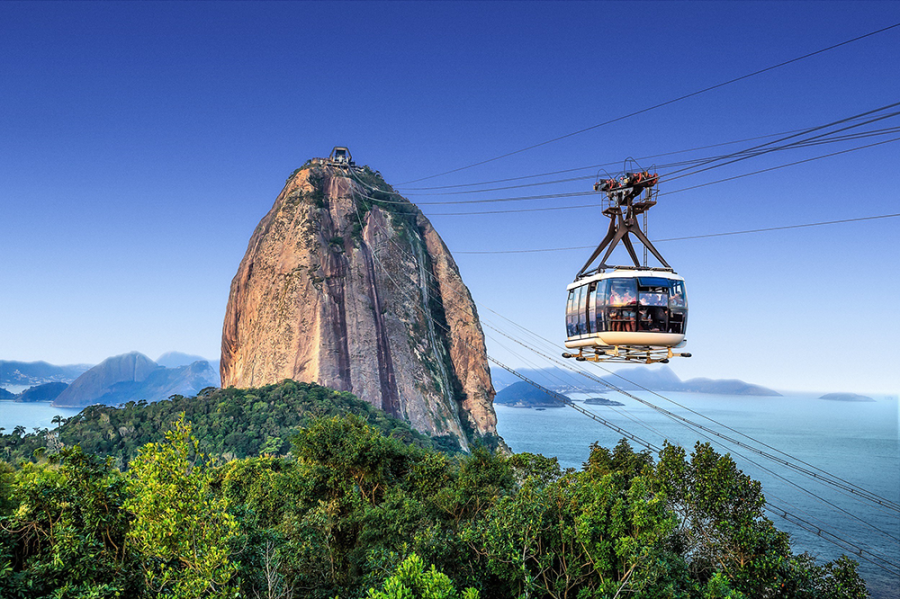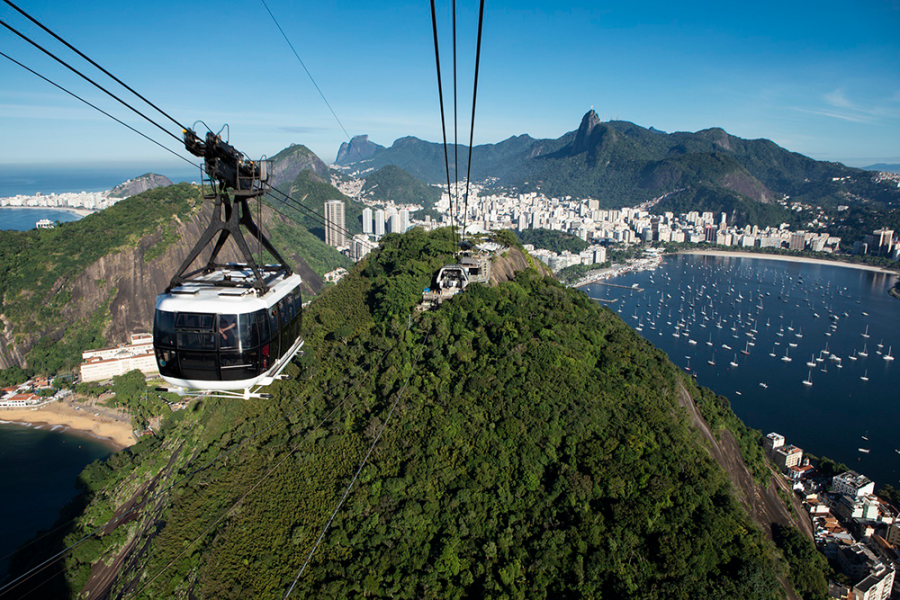Parque Bondinho Pão de Açúcar Inspires with its Sustainable Practices

The Pão de Açúcar Cable Car, the dream of engineer Augusto Ferreira Ramos, opened on Oct. 27, 1912. It was built through a daring operation and has received approximately 50 million visitors in its almost 110-year history. The cable car (bondinho in Portuguese, pronounced “bon-JIN-yo”)—which connects Morro Pão de Açúcar and Morro da Urca—put Rio de Janeiro on the list of major tourist attractions in the world by offering a spectacular view of the city, including more than 20 beaches and Corcovado Mountain, a symbol in Brazilian culture known worldwide for the 38-meter-tall Christ the Redeemer statue of Jesus atop its peak.
The cable car project’s construction was divided into two stages. The first segment, opened in 1912, connects Praia Vermelha to Morro da Urca, spanning 528 meters and rising 227 meters. The second section came into operation on Jan. 18, 1913, and it connects Morro da Urca to Morro Pão de Açúcar, which are separated by 750 meters, and has a maximum height of 396 meters.
In order to operate more efficiently, the cable car is constantly undergoing modernization, especially in energy consumption.
“We ensure that 100% of our energy demand comes from renewable sources through direct contracts with generating plants in Brazil’s free energy trade market,” says Pedro Horta, sustainability manager.
Currently, the main factors involved in the cable car’s efficiency and sustainability are its aerodynamic shape, which reduces wind resistance; its glass, with films that reduce energy demand for cooling; and its mechanical system, which takes advantage of the cable car’s descending weight in order to pull the ascending car up. This process also helps generate electricity for the park whenever the cable car going down is heavier than the one going up.
In addition to the energy efficient technology applied in the machinery operation, the park uses water efficient equipment, such as timers on toilet taps and a rare technology that consists of an aerial sewage pipe that descends from the Morro Pão de Açúcar to the Morro da Urca. It follows the same path as the car cables, connecting with the public sewage collection network at Morro da Urca.
This engineering ingenuity minimizes the impact of the wastewater on the rocky wall of Morro Pão de Açúcar and the surrounding marine environment.

Although waste management has been a challenge, the park has implemented effective methods for collecting and separating waste through recycling of paper, plastic, aluminum, and more; composting organic materials; reusing debris; co-processing hazardous waste; and re-refining oil. Additionally, there is a cleaning team prepared to collect any trash or waste that may have been displaced by the wind to the surrounding forest or to the Morro da Urca trail, one of the most visited places in the state of Rio de Janeiro. This trail passes through the middle of the conservation unit and connects Parque Bondinho Pão de Açúcar to the Claudio Coutinho track, another walking and running trail that runs 1.25 km and is located under the Morro Pão de Açúcar. The area is home to many native trees, birds, and small monkeys, and it has often been explored by the residents of the region for leisure and sports practice.
Both trails were officially adopted by Parque Bondinho Pão de Açúcar in 2016, and since then, together with the Conservation Unit Management, actions such as closing shortcuts, recomposing drainage structures and the surface of the trail, maintaining revegetation areas, conducting natural regeneration, planting seedlings, controlling exotic species, and removing graffiti from signposts have all been put into effect. Reforestation is another initiative that has been in force since the 1980s.
In view of its privileged location and various actions that make it possible to conserve the environment, the educational-socio-environmental project, “Educa Bondinho,” welcomes groups from public and private schools to encourage students to learn more about topics related to science, biology, geography, and history.
Parque Bondinho Pão de Açúcar takes an active role in society’s environmental causes through its use of energy efficient systems, and it has recently entered the carbon offset marketplace, taking stock of its greenhouse gas emissions in order to compensate 100% of the gases it emits.
Other new initiatives that generate positive impacts on local surroundings are in development. The park aims to inspire sustainability awareness of the entire region among residents, students, athletes, tourists, institutions, and companies.
“Our mission is to show how achievable it is to combine development and sustainability, as we strive to serve as an example for other tourist attractions and companies around the world,” says Sandro Fernandes, CEO of Parque Bondinho Pão de Açúcar. “Consequently, we keep in mind our purpose of inspiring happiness in all who connect with us, contributing to a better world and continuing our legacy of actions for sustainability.”
